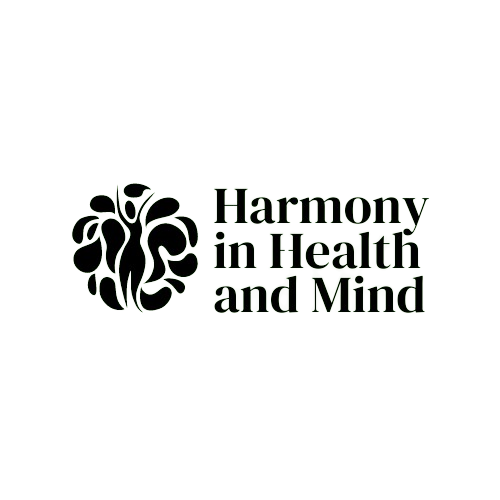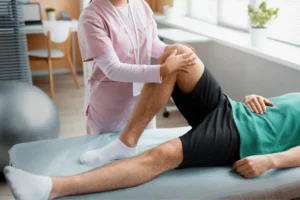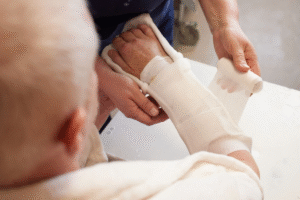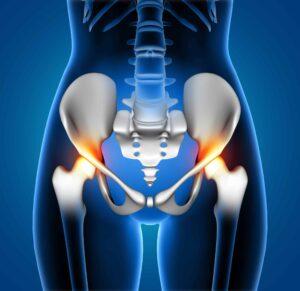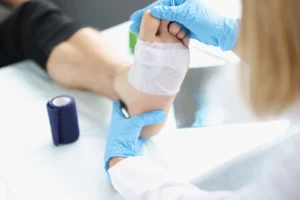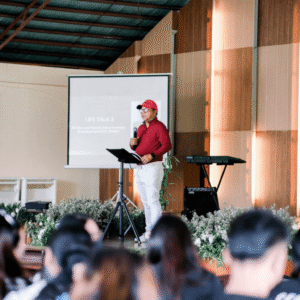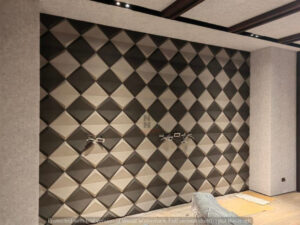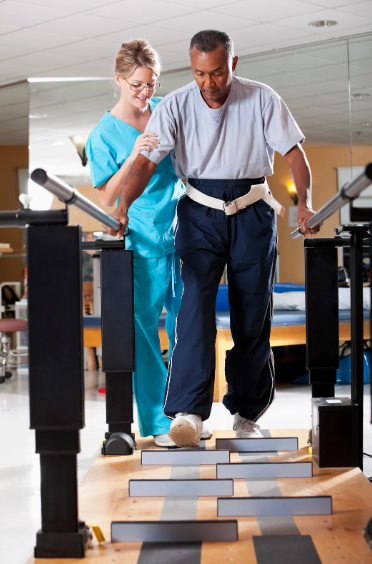Falls are one of the leading causes of injuries, particularly in older adults. Maintaining balance and proper gait is crucial to preventing these falls. When someone has balance and gait disorders, their ability to move with ease and stability is compromised, increasing the risk of accidents. Thankfully, balance and gait disorders treatment through specific exercises can significantly improve coordination, muscle strength, and overall mobility, reducing the likelihood of falls. This article will explore some of the most effective exercises for treating balance and gait disorders and highlight the role of physical therapy in the recovery process.
What Are Balance and Gait Disorders?
Balance and gait disorders refer to any conditions that affect a person’s ability to walk or maintain an upright position without losing their balance. These disorders can be caused by a variety of factors, including neurological conditions, muscle weakness, vestibular dysfunction, or simply the aging process. As the body’s ability to coordinate movement declines, individuals may find it harder to move fluidly or even stand for prolonged periods.
For many, balance and gait disorders treatment can begin with understanding the root cause of their issues. Conditions such as Parkinson’s disease, multiple sclerosis, or even inner ear issues can contribute to instability while walking or standing. Balance and gait disorders treatment through exercises aims to strengthen muscles, improve coordination, and enhance overall stability.
Why Strengthening Exercises Are Crucial for Fall Prevention
The key to effective balance and gait disorders treatment lies in strengthening the body. When the muscles that support the body are weak, especially in the legs and core, it becomes harder to maintain balance and walk safely. Strengthening exercises help enhance muscle stability, joint mobility, and coordination, all of which are crucial to maintaining a steady gait and preventing falls.
Incorporating strengthening exercises into your daily routine can significantly reduce the risk of accidents. These exercises are particularly beneficial for individuals suffering from balance and gait disorders, as they address the specific muscles and movements required for proper posture and movement. A strong body means better support for your joints and a more reliable ability to react to any shifts in balance, reducing the chances of falling.
Top Exercises for Treating Balance and Gait Disorders
Several exercises have proven to be beneficial for individuals with balance and gait disorders. These exercises are designed to improve muscle strength, enhance coordination, and increase stability. Below are some of the most effective exercises to treat balance and gait disorders:
Standing on One Leg
This exercise is simple yet highly effective. Standing on one leg challenges the body’s balance and helps to activate stabilizing muscles in the legs, core, and hips. To perform this exercise safely, use a sturdy chair or wall for support if necessary.
How to perform the exercise:
- Stand with your feet hip-width apart.
- Slowly lift one foot off the ground and balance on the other leg for 20 to 30 seconds.
- Switch legs and repeat the exercise.
By consistently performing this exercise, you can improve your overall balance and begin to notice improvements in your gait.
Heel-to-Toe Walk
The heel-to-toe walk helps improve coordination and gait stability. This exercise works the muscles in the lower body and trains the body to move fluidly while walking.
How to perform the exercise:
- Walk in a straight line, placing the heel of one foot directly in front of the toes of the other foot.
- Continue walking heel to toe for 10 to 20 steps.
- Focus on keeping your balance while moving, and avoid looking down at your feet.
This simple exercise is an excellent tool for anyone undergoing balance and gait disorders treatment and can be done anywhere, whether at home or in a physical therapy session.
Leg Raises
Leg raises help strengthen the hip flexors, quads, and abdominal muscles, all of which are essential for balance and stability.
How to perform the exercise:
- Lie flat on your back with your legs straight.
- Slowly raise one leg at a time, keeping it straight, and hold it in the air for a few seconds before lowering it.
- Perform 10 to 15 repetitions for each leg.
Leg raises are particularly effective in treating balance and gait disorders, as they target core muscles that are crucial for maintaining stability while standing and walking.
Tai Chi and Yoga
Tai Chi and yoga are ancient practices that have gained popularity for their ability to improve balance, flexibility, and coordination. Both exercises focus on controlled movements and deep breathing, which are great for improving posture and stability.
Tai Chi’s slow, deliberate movements help enhance coordination and joint flexibility, while yoga strengthens the core and increases flexibility.
These practices are highly recommended as part of balance and gait disorders treatment because they not only help with physical strength but also promote mental relaxation and focus. By consistently practicing Tai Chi or yoga, individuals can experience better gait stability and fall prevention.
Incorporating Functional Exercises for Daily Life
In addition to the above exercises, incorporating functional exercises into your routine can significantly improve your balance and gait. These exercises mimic real-life activities, such as squatting, stepping up, and bending, which require balance and coordination.
Examples of functional exercises include:
- Step-ups: Use a low step to practice stepping up and down, strengthening your legs and improving coordination.
- Squats: Perform squats to strengthen your lower body muscles, which are essential for maintaining balance.
Functional exercises focus on movements that people commonly perform throughout the day, which means that balance and gait disorders treatment through functional exercises helps individuals regain the strength and confidence needed to complete everyday tasks safely.
Safety Considerations During Exercises
When practicing exercises for balance and gait disorders treatment, safety should always be the top priority. Make sure to perform exercises in a controlled environment, preferably with support, such as holding onto a chair, countertop, or wall.
For individuals with balance and gait disorders, starting slow is crucial. Gradually increase the intensity and difficulty of exercises as your strength improves. Remember, it’s essential to listen to your body and avoid pushing beyond your limits, especially when you are beginning your balance and gait disorders treatment.
The Role of a Physical Therapist in Balance and Gait Disorder Treatment
Physical therapists play a crucial role in balance and gait disorders treatment. At Osteopractic Physical Therapy of Central Indiana, professionals assess each patient’s specific needs and create a personalized treatment plan. Physical therapy involves hands-on techniques, strength-building exercises, and tailored balance exercises designed to improve mobility and prevent falls.
Working with a physical therapist ensures that exercises are performed correctly and safely, providing the best outcomes. They can also teach you techniques for incorporating strengthening exercises into your everyday routine, helping you regain independence and confidence in your movements.
Lifestyle Changes and Additional Tips for Fall Prevention
In addition to exercises, several lifestyle changes can help reduce the risk of falls. Wearing proper footwear, removing tripping hazards from your home, and maintaining a healthy diet are all key components of balance and gait disorders treatment.
Additional tips include:
- Ensure good lighting in your home to avoid accidents caused by poor visibility.
- Incorporate walking into your daily routine to build endurance and strength.
- Get regular check-ups with your doctor to monitor any underlying conditions that may affect balance.
Strengthening Your Body for a Fall-Free Future
Maintaining balance and improving gait are essential components of fall prevention, especially for individuals with balance and gait disorders. By incorporating the right exercises into your daily routine, you can improve muscle strength, coordination, and overall stability. Balance and gait disorders treatment doesn’t have to be complicated—it simply requires consistency and commitment.
Whether you’re practicing at home or seeking professional help at Osteopractic Physical Therapy of Central Indiana, the right exercises can make a significant difference in your ability to move safely and confidently. Remember, preventing falls starts with strengthening your body and maintaining a balanced approach to exercise.
